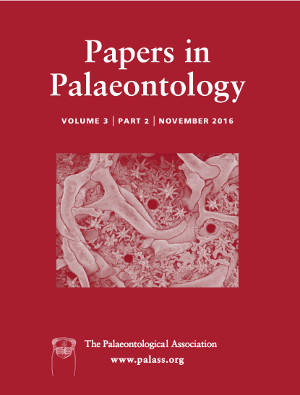Reg. Charity No. 1168330

We describe a new fossil crustacean from the famous Early Devonian Hunsrück Slate, Germany. Other crustacean fossils from this Lagerstätte are of the typical phyllocarid type. The new fossil genus and species Hohensteiniella engeli, represented by a single specimen, exhibits a typical shrimp‐like habitus. H. engeli therefore represents the first crustacean with eumalacostracan affinities from the Hunsrück Slate. Most prominently preserved is the biflagellate antennula, which measures about two‐thirds of the length of the main body. A series of stenopod‐like thoracopods enforce its shrimp‐like appearance. The head shield bears a short rostrum, but appears to have been rather short posteriorly. It remains unclear whether the new species forms an ingroup to Eumalacostraca or is its sister group, as certain key features are not preserved. Possible ingroup affinities may lie with the syncarid lineage (due to the short head shield) or decapod lineage (due to anterior thoracopods being shorter than posterior ones). Representatives of the eumalacostracan lineage are rare in the Devonian and are in most cases younger than H. engeli. Only Archangeliphausia spinosa is slightly older. The specimen of H. engeli is preserved associated with small spherical structures that could represent eggs. We discuss the possibility that H. engeli might have performed a type of parental care.